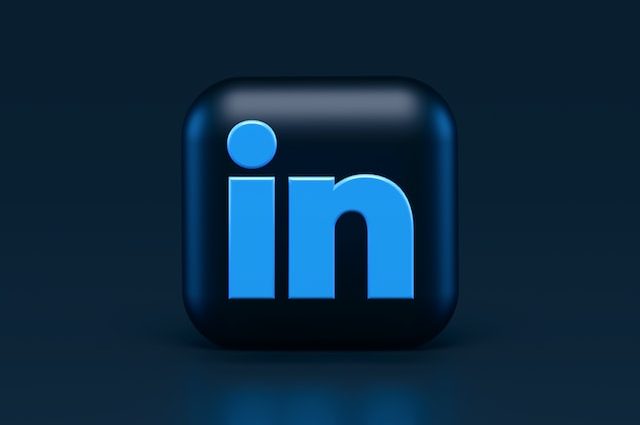LinkedIn has become essential for professionals and businesses to establish their online presence, build their network, and connect with potential clients or customers. LinkedIn is important for businesses for several reasons:
- Professional networking: LinkedIn is a platform designed for professionals to connect and network with each other. Businesses can connect with potential customers, partners, and employees by creating a presence on LinkedIn.
- Brand awareness: Businesses can leverage to increase brand awareness. By regularly posting updates and sharing valuable content, businesses can establish themselves as thought leaders in their industry and build trust with their target audience.
- Talent acquisition: LinkedIn is a go-to platform for recruiters and job seekers. Businesses can use LinkedIn to post job openings, search for potential candidates, and learn more about their applicants.
- Lead generation: LinkedIn offers a range of advertising options, including Sponsored Content, Sponsored InMail, and Display Ads, that allow businesses to reach their target audience and generate leads.
- Industry insights: LinkedIn provides businesses with valuable insights into their industry and target audience. By joining relevant groups and following industry thought leaders, businesses can stay up-to-date on the latest trends and developments in their industry.
LinkedIn is a powerful tool for businesses to establish their online presence, connect with potential customers and partners, attract talent, and generate leads. By leveraging the platform effectively, businesses can improve their visibility, establish themselves as thought leaders, and achieve their business goals.
Hence it becomes crucial for businesses to learn the content, marketing, and lead generation strategy on LinkedIn.
LinkedIn: From a career portal to the world’s biggest professional network
LinkedIn Marketing Strategy
Here are some steps to create an effective LinkedIn marketing strategy:
- Define your goals: Defining your goals before creating a LinkedIn marketing strategy is essential. Some common goals include increasing brand awareness, generating leads, and driving website traffic.
- Optimize your LinkedIn Company Page: Create a LinkedIn Company Page that represents your brand and includes all the necessary information about your business, such as a description, logo, website URL, and contact details. Ensure your page is optimized for search by using relevant keywords in your profile and posts.
- Develop a content marketing plan: Develop a content marketing plan that includes a mix of different types of content, such as blog posts, case studies, infographics, and videos. Ensure your content provides value to your target audience and aligns with your business goals.
- Engage with your audience: Engage with your audience by responding to comments, asking for feedback, and participating in industry conversations. This will help you build relationships with your target audience and establish your business as a thought leader in your industry.
- Leverage LinkedIn Ads: Use LinkedIn Ads to reach your target audience and promote your content. LinkedIn Ads offers a range of targeting options that allow you to reach users based on their job title, industry, company size, and other factors.
- Use LinkedIn Groups: Join relevant LinkedIn Groups and participate in discussions to connect with potential customers and establish your business as an authority in your industry.
- Measure your results: Use LinkedIn analytics to track the performance of your content and campaigns. Look for metrics such as engagement, clicks, and leads to see how well your strategy works.
By following these steps, you can create an effective LinkedIn marketing strategy that helps you reach your target audience, establish your business as a thought leader in your industry, and generate leads.
How to check the effectiveness of your marketing Strategy on LinkedIn?
To check the effectiveness of your marketing strategy on LinkedIn, here are some key metrics to track:
- Engagement: Track the number of likes, comments, and shares on your posts. This will give you an idea of how well your content resonates with your target audience.
- Follower growth: Keep track of the number of followers your LinkedIn Company Page gains over time. This will help you understand how well your content reaches and engages new potential customers.
- Click-through rates: Track the click-through rates (CTR) of your LinkedIn Ads and the links in your posts. This will help you understand how many people click through to your website or landing page.
- Lead generation: If your goal is to generate leads, track the number of leads you generate from your LinkedIn marketing efforts. You can do this by setting up conversion tracking on your website or using LinkedIn’s Lead Gen Forms.
- Website traffic: Track the website traffic you get from LinkedIn. You can do this by using Google Analytics or other website tracking tools.
- Social selling index (SSI): LinkedIn provides an SSI score that measures how well you’re using LinkedIn to establish your professional brand, find the right people, engage with insights, and build relationships. Monitor your SSI score over time to see how well you’re leveraging LinkedIn to achieve your marketing goals.
By tracking these metrics, you can clearly see how well your LinkedIn marketing strategy is performing and make data-driven decisions to improve your results.
LinkedIn: Redefining its content strategy
LinkedIn Content Strategy
Here are some tips for creating a successful LinkedIn content strategy for your business:
- Define your target audience: Before creating content, you need to know who your target audience is. Who are you trying to reach, and what are their interests and pain points? Once you know this, you can tailor your content to their needs and preferences.
- Create a content calendar: Plan out your content in advance to ensure a consistent presence on the platform. Consider the types of content you want to create, such as blog posts, videos, or infographics, and decide on a frequency for posting.
- Share thought leadership content: LinkedIn is a platform for professionals, so it’s an excellent place to share thought leadership content. Create content that demonstrates your expertise in your industry and offers value to your audience.
- Use visuals: Visual content tends to perform well on LinkedIn, so include images, videos, and infographics in your posts. This will make your content more engaging and shareable.
- Engage with your audience: LinkedIn is a social platform, so don’t just post content and walk away. Respond to comments, join groups, and engage with other users’ content. This will help you build relationships with your audience and establish your brand as an authority in your industry.
- Measure your success: Use LinkedIn’s analytics tools to track your performance and see which content types resonate with your audience. Use this data to refine your strategy and create even more compelling content in the future.
By following these tips, you can create a strong LinkedIn content strategy that helps you achieve your business goals and build your brand on the platform. The Strategy Story is popular on LinkedIn for its innovative content strategy.
How to write content on LinkedIn?
Here are some tips to help you create engaging and compelling content:
- Start with an attention-grabbing headline: The headline should be short, concise, and to the point. It should also be interesting enough to make people want to read the rest of the post.
- Use an introduction to set the tone: The introduction should be short and engaging and should give readers a sense of what the post is about. You can use a hook or a question to get people interested.
- Use headings or bullet points: Use headings or bullet points to break up the text and make it easier to read. This can also help highlight the main points of your post.
- Use images or videos: Images and videos can help make your post more engaging and can help illustrate your points. Make sure the visuals are high-quality and relevant to the topic.
- Share your insights: The body of your post should provide value to your audience. Share your insights, knowledge, and expertise on a topic related to your business. Be specific and provide examples where possible.
- Provide value: Make sure your content provides value to your target audience. This will help keep them engaged and interested in your brand.
- Use storytelling: Use storytelling to create an emotional connection with your audience and make your content more memorable.
- Add a call-to-action: Encourage readers to take a specific action, such as visiting your website, downloading a free resource, or subscribing to your newsletter.
- Keep it concise: LinkedIn posts should be relatively short and to the point. Keep your post between 300-500 words if possible.
- End with a conclusion: The conclusion should summarize the main points of your post and reiterate the call to action.
Remember to proofread your post before publishing it and ensure it’s easy to read and visually appealing. Following these tips can create a well-structured LinkedIn post to engage your audience and help promote your business.
Playbook by The Strategy Story: How to write a post on LinkedIn
LinkedIn lead generation strategy
A comprehensive LinkedIn lead generation strategy can include the following steps:
- Define your target audience: Before generating leads, you must define your target audience. Who are you trying to reach? What industries do they work in? What job titles do they have? Understanding your target audience will help you create a more effective strategy.
- Optimize your profile: Make sure your LinkedIn profile accurately represents your business and includes all relevant information, including your logo, company description, and contact information. Use keywords that describe your business and industry in your profile so potential leads can easily find you.
- Share valuable content: Create and share content that provides value to your target audience. This could include industry news, thought leadership pieces, case studies, or tips and advice. Ensure your content is high-quality, engaging, and relevant to your audience.
- Use LinkedIn Ads: Consider using LinkedIn Ads to reach a targeted audience and promote your business. Sponsored content, sponsored InMail, and display ads can all effectively reach potential customers on the platform.
- Use Advanced Search: LinkedIn’s Advanced Search feature allows you to search for potential leads by location, industry, job title, and more. Use this feature to find people likely to be interested in your products or services.
- Engage with your audience: Respond to comments, join groups, and share other users’ content. This will help you build relationships with your audience and establish your business as an authority in your industry.
- Personalize your messages: When reaching out to potential leads, personalize your messages. Mention something specific about their profile or company, and explain why you think your product or service could benefit them.
- Use lead generation tools: LinkedIn offers a range of lead generation tools, including Lead Gen Forms, which allow you to capture leads directly from LinkedIn ads. You can also use third-party tools to help you identify and contact potential leads on the platform.
- Measure your results: Use LinkedIn analytics to track your performance and determine which tactics work. Use this data to refine your strategy and improve your results over time.
By following these steps, you can create a comprehensive LinkedIn lead generation strategy that helps you effectively reach your target audience and grow your business.
How can businesses leverage LinkedIn Ads for lead generation?
Here’s a step-by-step guide to creating a successful LinkedIn Ads strategy:
- Define your campaign goals: Before creating a LinkedIn Ads campaign, define your campaign goals. Are you looking to increase brand awareness, generate leads, or drive website traffic? Understanding your goals will help you create a more effective campaign.
- Define your target audience: Use LinkedIn’s targeting options to define your target audience. You can target users based on their job title, industry, location, company size, etc. Define your audience based on your campaign goals and the demographics of your ideal customer.
- Choose your ad format: LinkedIn offers a range of ad formats, including Sponsored Content, Sponsored InMail, and Display Ads. Choose the ad format that best aligns with your campaign goals and target audience.
- Create your ad: Use eye-catching visuals and compelling ad copy to grab the attention of your target audience. Ensure your ad is concise and includes a clear call to action.
- Set your budget: Set a budget for your campaign based on your goals and the size of your target audience. LinkedIn Ads uses an auction system, so you’ll only pay when someone clicks on your ad or takes another desired action.
- Monitor your campaign: Monitor your campaign’s performance and adjust your targeting, ad copy, and visuals as needed. Use LinkedIn’s analytics tools to track your performance and optimize your campaigns over time.
- Test and refine your strategy: Continuously test different ad formats, targeting options, and ad copy to see what works best for your business. Refine your strategy based on your results to improve the performance of your campaigns over time.
By following these steps, you can create a successful LinkedIn Ads strategy that helps you reach your target audience, generate leads, and drive more traffic to your website.











